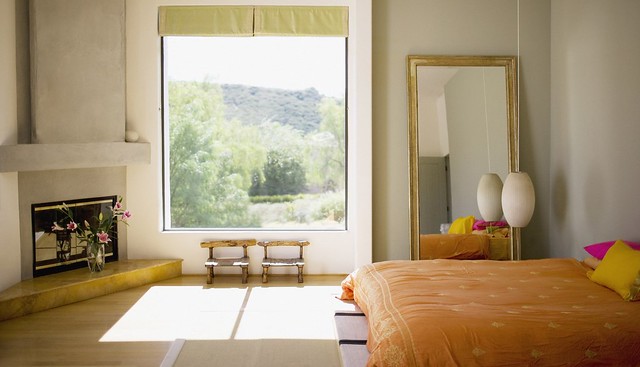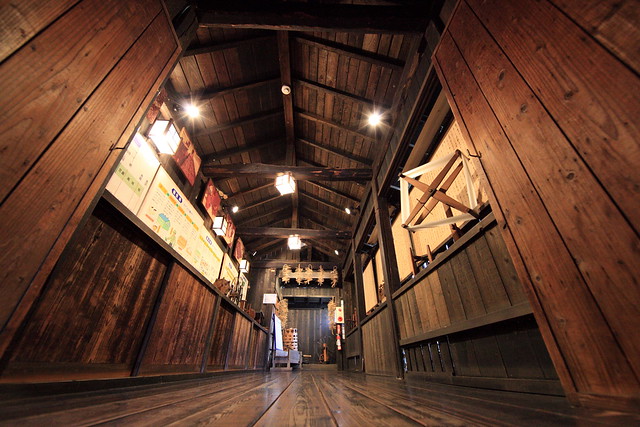Simplify
This is the first tip I would like to give you. If you view the interior in front of you, take notice in what needs to be there and what doesn’t. Remove everything that would “eat up” focus in the final photo and leave everything that grabs the attention. For instance, a piece of dirty paper, or anything unorganized is something you’d probably won’t want in the picture, but with that said—a red toy lying in the middle of the floor might actually be something that makes the photo stronger.

photo captured by Wicker Paradise
Also, everything doesn’t have to be perfect, a badly done bed can make it look cozy and more spontaneous, but it has to have a purpose. Something that just doesn’t fit, or give a sense of annoyance doesn’t. This is something you’ll learn in time—what will fit and what will not—but keep in mind that the photograph needs to be simplified. I myself use the function of Live View in my camera to get a better view of the final picture. Something that proved to be extremely helpful, yet ate power like crazy so after a three hour photo shoot the 5D Mark II battery was nearly dead. So if you are going for a long session and plan on using Live View, bring spare batteries.
Be Aware of the Lines
Interior design is a lot about form and you as the photographer need to capture that. Be aware of every line in the interior and how you can use it. In the case of photographing a kitchen recently, since it was very white and the cupboards where clearly divided into a grid, I used this to create a lead in into the picture—kind of like a road in a landscape.

“interiors” captured by Tom Merton
Lines that are supposed to be perfectly horizontal or vertical must be so in the final picture. For instance, the shelves are supposed to lean into the picture, but the floor would look really odd if it tilted just slightly. It needs to be perfectly straight. This is something that is kind of hard to do sometimes without extremely expensive equipment, so you can fix it afterward in Lightroom. I shoot as good of a shot as I can and then make sure afterward that the lines are flawless. In real life they are—it’s the distortion in the lens that bends them.
To help you out you can pretty much imagine a grid across the picture. If a line from a floor, door or whatever breaks that grid just slightly, it’s wrong, but if it breaks it a lot (kinda like the cupboards that would go diagonally through the grid) it’s okay.
Don’t Forget the Unique Details
Every interior designer has a few elements they’re proud of or something that’s unique in that specific interior design, and you definitely want to capture that. A good interior designer has put a lot of thought and care into every single detail. If you notice and capture a detail that they worked hard on, guess who feels satisfied with your work? The designer.

“interior. hans christian hansen, architect: tagensbo kirke / church, copenhagen 1966-1970.” captured by seier+seier
Overview
Once you’re walking around in the property and you find all these cool details, it can be easy to forget about the overview. However once you shoot an overview, or any view for that matter—never shoot from eye level. Everything on eye level is boring, it’s the same view every person sees every day.

“Japanese traditional style farm house / 農家(のうか)” captured by TANAKA Juuyoh (田中十洋)
So instead, go either extremely low, extremely high—or what I prefer to do is to look for the lines and objects and get on their level and just slightly above. This way I get an interesting view yet still some depth. A table, for instance, at its own height is just a line, but if I raise the camera up just a little bit I’ll get some depth.
My last tip from this experience: bring a tripod. I shot during the day to get a good light, we turned on every light-source to get some life into the picture and finally placed the camera on the tripod, adjusted it perfectly with Live View and I took the shot with a two second shutter timer. This is because I didn’t want me pressing the shutter button messing with the sharpness of the final photograph. And since interior photography requires a really small aperture, the shutter speed will be several seconds.
About the Author:
This article was written by Mikael Cedergren (mikaelcedergren.com).
Go to full article: Tips on How to Shoot Amazing Interior Photography
What are your thoughts on this article? Join the discussion on Facebook
PictureCorrect subscribers can also learn more today with our #1 bestseller: The Photography Tutorial eBook
The post Tips on How to Shoot Amazing Interior Photography appeared first on PictureCorrect.